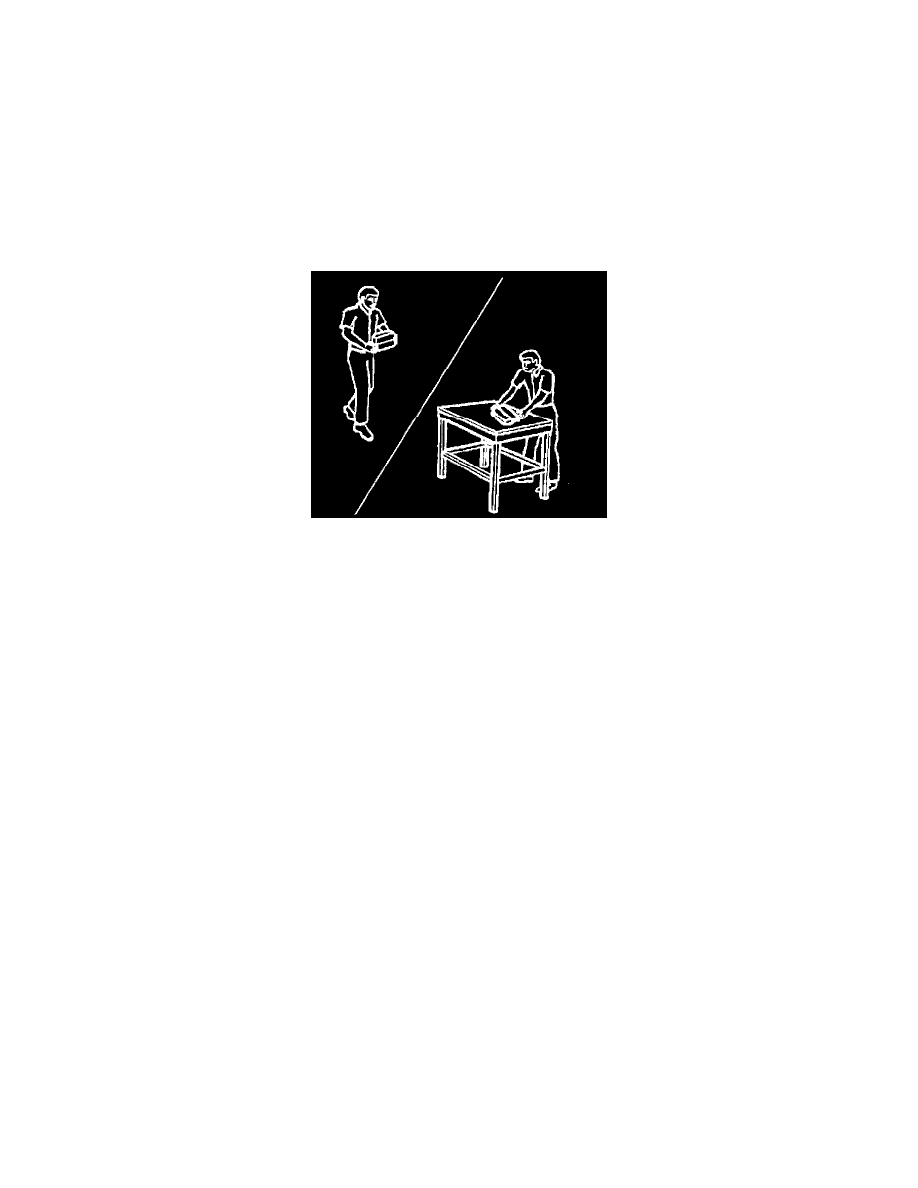Lumina V6-3.1L VIN J (2000)

Air Bag: Service and Repair
Handling/Shipping/Scrapping
Handling A Deployed Inflator Module
After the inflator module has deployed, the surface of the air bag may contain a powdery residue. This powder consists primarily of cornstarch (used to
lubricate the bag as it inflates), and by-products of the chemical reaction. The deployment reaction produces sodium hydroxide dust (similar to lye soap).
The sodium hydroxide quickly reacts with the atmospheric moisture. This atmospheric moisture converts the sodium hydroxide into sodium carbonate
and sodium bicarbonate (baking soda). Therefore, you will probably find no sodium hydroxide present after the deployment. Gloves and safety glasses
are recommended, however, as a precaution. Gloves and safety glasses help to prevent possible irritation of the skin or eyes.
Inflator Module Handling, Shipping, and Scrapping
CAUTION: When you are carrying an undeployed inflator module:
^
Do not carry the inflator module by the wires or connector on the inflator module
^
Make sure the bag opening points away from you
When you are storing an undeployed inflator module, make sure the bag opening points away from the surface on which the inflator module
rests. When you are storing a steering column, do not rest the column with the bag opening facing down and the column vertical Provide free
space for the air bag to expand in case of an accidental deployment. Otherwise, personal injury may result.
LIVE (UNDEPLOYED) INFLATOR MODULE
Take special care when handling or storing a live (undeployed) inflator module. An air bag deployment produces rapid gas generation. This may cause
the inflator module, or an object in front of the inflator module, to jettison through the air in the event of an unlikely deployment.
SHIPPING PROCEDURES
Refer to the latest service bulletins for proper SIR inflator module shipping procedures.
SCRAPPING PROCEDURE
During the course of a vehicle's useful life, certain situations may arise which will necessitate the disposal of a live (undeployed) inflator module. The
following information covers the proper procedures for the disposing of a live inflator module. Deploy the inflator module before disposal. Do not
dispose of the module through normal disposal channels.
CAUTION: In order to prevent accidental deployment of the air bag which could cause personal injury, do not dispose of an undeployed
inflator module as normal shop waste. The undeployed inflator module contains substances that could cause severe illness or personal injury
if the sealed container is damaged during disposal Use the following deployment procedures to safely dispose of an undeployed inflator
module. Failure to dispose of an inflator module as instructed may be a violation of federal, state, province, or local laws.
Do not deploy an air bag in the following situations:
^
After replacement of an inflator module under warranty. The module may need to be returned undeployed to the Delphi Interior & Lighting Group.
Refer to the latest service bulletin regarding SIR shipping procedures.
^
If the vehicle is the subject of a Product Liability report related to the SIR system and is subject to a Preliminary Investigation (GM-1241). Do not
alter the SIR system in any manner. Refer to the latest service bulletin on SIR shipping procedures.
^
If the vehicle is involved in a campaign affecting the inflator modules. Follow the instructions in the Campaign Service Bulletin for proper SIR
handling and shipping procedures.
